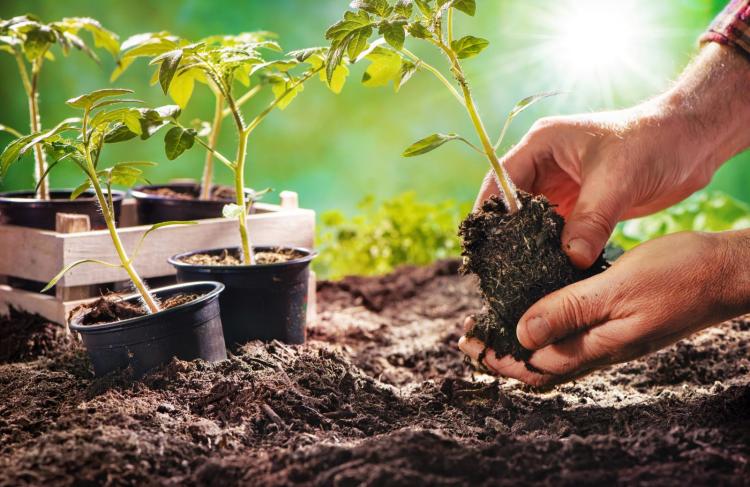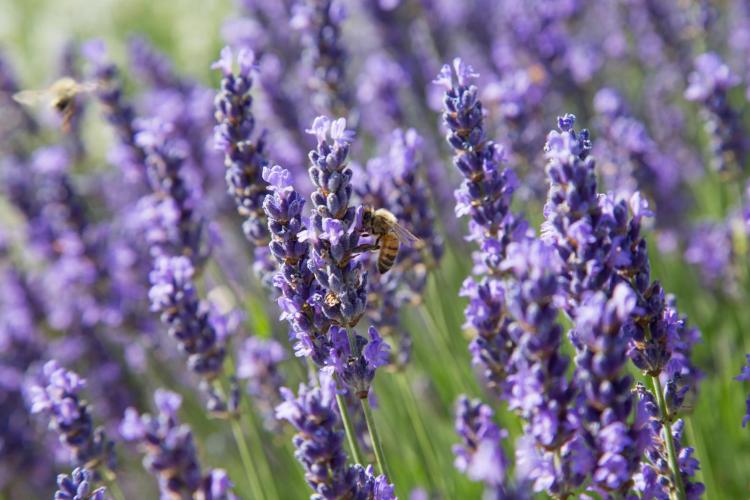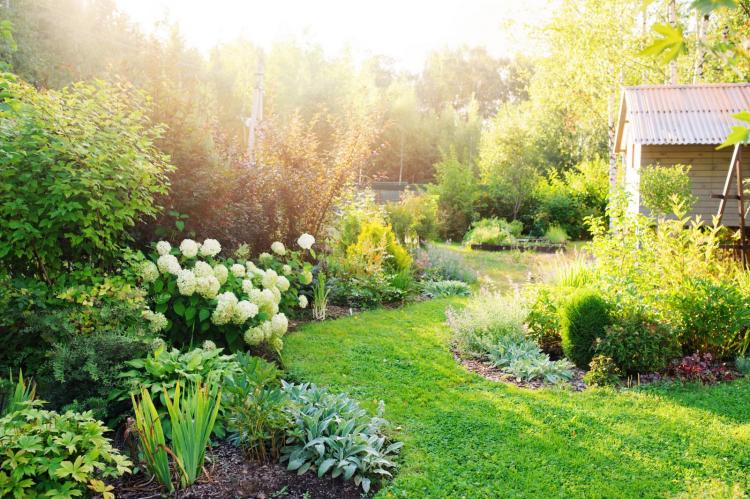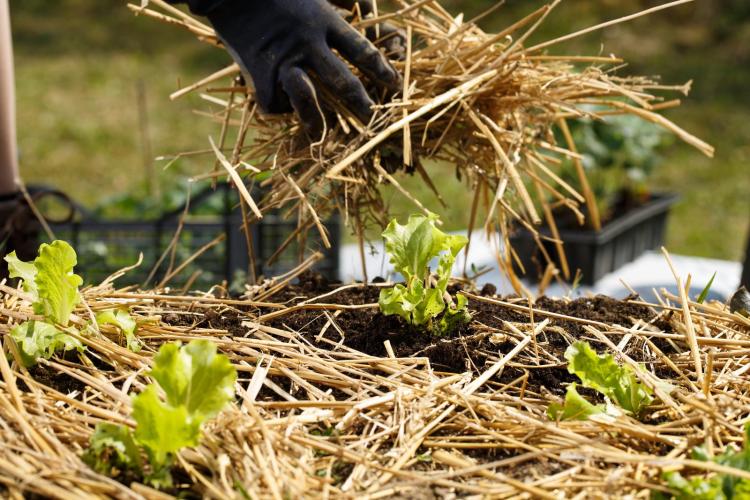
As the UK lockdown continues and many of us are adjusting to spending an increasing amount of time at home, amidst all the unwanted aspects of the pandemic, there’s also something quite wonderful happening. People around the country are getting busy in their gardens, digging the ground, clearing weeds and sowing seeds - some for the very first time.
Has the lockdown inspired a gardening revolution - a back-to-basics, grow-your-own revival? Possibly. But whatever your motivations for taking up the garden spade, growing plants can bring a wealth of benefits during these challenging times. Physical exercise, relaxation, nature connection, educational activities for the children, gardening has it all covered.
For those who are new to gardening however, it can often seem a little daunting. Where to start? What to grow? Where to buy plants - aren’t all the garden centres closed? If you’re heading into unknown gardening territory, don’t worry, I’m here to help. Join me as I dust off my gardening gloves and head to the potting shed to begin this season's gardening endeavours.
In this first article, I’m going to show you four easy steps to getting started in the garden. We’ll cover deciding what to grow, finding the perfect spot for each plant, preparing the ground for planting, and take a quick look at the basic gardening tools and equipment you’ll need to get your gardening adventures underway.
It might sound obvious, but the absolute best place to start with gardening is to first decide what you want to grow. What is your motivation for gardening? Do you want to grow your own food? Do you want to brighten up your garden with some colourful flowers? Maybe a bit of both?
My top tip for choosing edible plants is to choose foods that you enjoy eating and that are best eaten really fresh. Take salad for example. In terms of both taste and nutrition, there’s no comparison between salad leaves picked freshly from the garden and those in plastic bags from the supermarket. The same with tomatoes. A home-grown tomato, left on the plant until perfectly ripe and eaten straight away is simply divine. You’ll never look at a tomato in the same way again.

Consulting other member’s of your household is beneficial, they’ll have more motivation for lending a hand later on, and if you’re four-year-old suggests pineapple, that’s okay, there’s always room for a little experimentation.
The garden environment plays an important role in selecting the type of plants you’ll be able to grow (more on this later). But beyond environmental conditions, there are many criteria you could use to choose flowers including colour, scent, ease of growing and ability to attract wildlife. When designing gardens, I like to consider plants that have multiple benefits. Lavender, for example, is a wonderful plant for attracting bees. I enjoy both its colour and its scent and it can be harvested for its edible, medicinal and aromatherapy properties. It earns its place! My children love sunflowers which definitely have a fun factor as well as providing bold colour and giving height to the back of a border.

Okay, so you’ve got your ideal list of plants that you want to grow. I say “ideal” because there is a slight catch. Before you go any further you need to check that you can provide the right conditions for each plant on your list. And this requires a bit of quick research into individual plants as well as some shrewd observation of your garden. If you can provide your plants with the right conditions for healthy growth then you're onto a winner. This is the secret to becoming a successful gardener.
If you have kids at home who can do this research, put them to work and if you haven’t got any gardening books, the internet is your friend. Find out the basics for each plant. Does it like to grow in full sun or will it tolerate some shade? What sort of soil does it need? What temperature range does it grow best in?
Now that you know what each plant needs for healthy growth, it’s time to get to know your garden and find the perfect spot for each plant. Your garden has its own microclimates, based upon aspect (the direction your garden is facing), prevailing wind, the water table, and gradient of the land. Take a look around your garden and make note of what parts are in the sun at different times of the day. Different plants need varying amounts of light, some will thrive in full sun, while others are more tolerant of the shade. Tomatoes, for example, need full sun, so you’re going to need to put them in the area of your garden that receives the maximum amount of sunshine over the course of the day. What if your whole garden is very shady? Think about where else they could get enough sunshine. Do you have a sunny window ledge indoors that could provide the perfect spot? Sunny window ledges are great for tumbling tomatoes, chillies and sun loving herbs like basil and coriander.

Right, you’ve got your plant and flower list and you’ve identified where they will grow best. Now it’s time for action! Whatever and wherever you’re growing, you need to prepare the soil first. Healthy soil equals healthy plants. Your soil needs to be weed-free (so there’s no competition for your plants), it needs to be friable (meaning that it has a nice crumbly texture, allowing your plants to root easily) and it needs to have the right amount of nutrients for your particular plant. If you already have existing beds or borders, then you can weed those, spread some compost and you’re ready to go. Otherwise, you’ll need to create some new growing areas.
Top-Tip: Never leave the soil bare. Bare soil invites weed seeds to germinate there and also dries out really quickly. (Plus the local cats might think you’ve created them a bespoke toilet area). After weeding, use a mulch (ground covering material) to keep the moisture in and prevent weed growth. There are lots of options for organic mulches including cardboard, grass clippings, straw and bark-chips.

Digging is the conventional way to prepare new ground. If choosing to dig, you need to make sure that you remove any perennial weed roots (such as dandelion, couch grass and bindweed), before adding fertility to the soil with compost or well-rotted manure. There is also a “no-dig” method which involves covering the ground with a light-excluding mulch to kill off grass and perennial weeds. Depending on the type of weeds, it can take a year or more to get rid of them using this method, although it is possible to create instant growing areas by building raised beds filled with a good depth of a topsoil/compost mix.
You only need a handful of basic equipment to get started. Many garden centres are closing their doors due to current lockdown requirements but you can still source these things online. Some garden centres are also offering delivery, so give them a call to check.
Here are the essentials:
Right, that should be enough to get you started. Stay tuned for more green-fingered tips and monthly gardening advice. Enjoy the sunshine and happy gardening!
Loading recent activity...